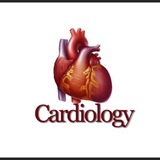Constrictive pericarditis
Constructive pericarditis can be tricky to diagnose because its symptoms often mimic those of other conditions like restrictive cardiomyopathy or right heart failure. A multimodal approach combining clinical evaluation, imaging, and hemodynamic studies is usually needed.
1. Clinical Signs
Fatigue, dyspnea, abdominal distension
Peripheral edema, ascites, hepatomegaly
Kussmaul’s sign (JVP rises on inspiration)
Pericardial knock (early diastolic sound on auscultation)
---
2. Echocardiography
Key non-invasive tool, often the first test:
Septal bounce (early diastolic motion of interventricular septum)
Respirophasic variation in mitral/tricuspid inflow
Dilated IVC with reduced respiratory variation
Normal or small ventricles, often with pericardial thickening
---
3. Cardiac CT or MRI
These help confirm the diagnosis:
Pericardial thickening (>4 mm)
Pericardial calcification (CT)
MRI may show pericardial inflammation (with gadolinium)
---
4. Cardiac Catheterization
Gold standard for definitive diagnosis:
Equalization of end-diastolic pressures in all chambers
Square root sign (dip and plateau pattern) in ventricular pressure tracing
Discordance of LV and RV pressures with respiration
---
5. Lab Tests
May help rule out causes: TB, autoimmune diseases, malignancy
BNP usually low or normal (vs restrictive cardiomyopathy where it's high)
Pulse wave Doppler plays a crucial role in diagnosing constrictive pericarditis by identifying abnormal ventricular filling patterns, especially the exaggerated respiratory variation in inflow velocities due to the non-compliant pericardium.
Here’s how pulse Doppler findings help in constrictive pericarditis:
---
1. Mitral Inflow Doppler (Apical 4-chamber view)
Respiratory variation >25% in mitral E velocity:
Inspiration: ↓ Mitral E velocity (↓ LV filling)
Expiration: ↑ Mitral E velocity (↑ LV filling)
This is due to ventricular interdependence: during inspiration, more blood goes to the RV and less to the LV (and vice versa).
---
2. Tricuspid Inflow Doppler
Respiratory variation >40% in tricuspid E velocity:
Inspiration: ↑ Tricuspid E velocity
Expiration: ↓ Tricuspid E velocity
---
3. Hepatic Vein Flow (Subcostal view)
Prominent diastolic flow reversal during expiration
Indicative of elevated right atrial pressures and impaired RV compliance
---
4. Pulmonary Vein Flow
Reduced or absent diastolic forward flow
May show blunted or reversed diastolic flow during expiration
https://www.tg-me.com/cardiology
Constructive pericarditis can be tricky to diagnose because its symptoms often mimic those of other conditions like restrictive cardiomyopathy or right heart failure. A multimodal approach combining clinical evaluation, imaging, and hemodynamic studies is usually needed.
1. Clinical Signs
Fatigue, dyspnea, abdominal distension
Peripheral edema, ascites, hepatomegaly
Kussmaul’s sign (JVP rises on inspiration)
Pericardial knock (early diastolic sound on auscultation)
---
2. Echocardiography
Key non-invasive tool, often the first test:
Septal bounce (early diastolic motion of interventricular septum)
Respirophasic variation in mitral/tricuspid inflow
Dilated IVC with reduced respiratory variation
Normal or small ventricles, often with pericardial thickening
---
3. Cardiac CT or MRI
These help confirm the diagnosis:
Pericardial thickening (>4 mm)
Pericardial calcification (CT)
MRI may show pericardial inflammation (with gadolinium)
---
4. Cardiac Catheterization
Gold standard for definitive diagnosis:
Equalization of end-diastolic pressures in all chambers
Square root sign (dip and plateau pattern) in ventricular pressure tracing
Discordance of LV and RV pressures with respiration
---
5. Lab Tests
May help rule out causes: TB, autoimmune diseases, malignancy
BNP usually low or normal (vs restrictive cardiomyopathy where it's high)
Pulse wave Doppler plays a crucial role in diagnosing constrictive pericarditis by identifying abnormal ventricular filling patterns, especially the exaggerated respiratory variation in inflow velocities due to the non-compliant pericardium.
Here’s how pulse Doppler findings help in constrictive pericarditis:
---
1. Mitral Inflow Doppler (Apical 4-chamber view)
Respiratory variation >25% in mitral E velocity:
Inspiration: ↓ Mitral E velocity (↓ LV filling)
Expiration: ↑ Mitral E velocity (↑ LV filling)
This is due to ventricular interdependence: during inspiration, more blood goes to the RV and less to the LV (and vice versa).
---
2. Tricuspid Inflow Doppler
Respiratory variation >40% in tricuspid E velocity:
Inspiration: ↑ Tricuspid E velocity
Expiration: ↓ Tricuspid E velocity
---
3. Hepatic Vein Flow (Subcostal view)
Prominent diastolic flow reversal during expiration
Indicative of elevated right atrial pressures and impaired RV compliance
---
4. Pulmonary Vein Flow
Reduced or absent diastolic forward flow
May show blunted or reversed diastolic flow during expiration
https://www.tg-me.com/cardiology
Telegram
Cardiology
👨💻 @dr_navruz
